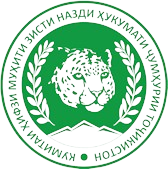
Project objective
The Project Development Objective is to increase the area under sustainable landscape management in selected locations in Tajikistan, and promote Tajikistan’s collaboration with Central Asia countries on transboundary landscape restoration.
Land degradation in Tajikistan, as outlined in earlier sections, is broad-based, covering multiple land uses and sectors. The approach to landscape management in the project recognizes multiple drivers of degradation and country-specific challenges and constraints. Thus, the project will support sustainable land management in forestry, pasture, protected areas, and small-scale cropping systems. Other areas such as water resource management particularly for irrigation, livestock husbandry, and commercial agriculture have not been chosen for support because there are donors, including the WBG, International Fund for Agricultural Development (IFAD), and others, active in these sectors. Regionally, the project aims to strengthen collaboration with neighboring countries in key aspects of landscape management.
Project areas/districts have been selected in consultation with Government and other stakeholders based on a combination of criteria: poverty incidence, potential for integrated landscape restoration (incorporating pasture, agriculture, water, forestry, and biodiversity), regional and transboundary corridors, and complementarity with Government- and donor-funded initiatives. When overlaid on the current arrangements of river basins, the project sites fall in the following river basins: (a) Zarafshon basin covering three districts—Ayni, Panjekent, and K. Mastchoh (in Sughd oblast, bordering Uzbekistan and the Kyrgyz Republic); (b) Upper Panj covering four districts—Vanj, Rushon, Shughnon, and Murghab (in Gorno Badakhshan Autonomous Oblast [GBAO], bordering the Kyrgyz Republic and Afghanistan); and (c) Lower Kofarnihon covering three districts—Shahrituz, Nosir Khosrov, and Qubodiyon (in Khatlon oblast, bordering Uzbekistan and Afghanistan).
Component 1: Strengthen Institutions and Policies, and Regional Collaboration (US$6.50 million)
Component 2: Enhance Resilient Landscapes and Livelihoods (US$35.50 million)
Component 3. Project Management and Coordination (US$3 million)
Implementation period: 2022-2027
Total project funds (in USD): 45 000 000
E&S Risk Category: B